comprex® - The mechanical cleaning with air and water
Cleaning drainage pipes
Drainage pipes drain water from the ground without pressure. Comprex cleaning was previously not suitable for such applications. Flow-through pipe sealing cushions, which are inserted into the drainage pipe at maintenance shafts, allow the Comprex technology to be used effectively for cleaning.
Cleaning with comprex® drainage systems
Drainage pipes – also known as drainage or seepage pipes – absorb water from the surrounding soil and discharge it without pressure. There are different types of drainage pipes:
1/3 slotted (multi-purpose pipe), 2/3 slotted at the top (partial seepage pipe) and slotted on all sides (full seepage pipe).
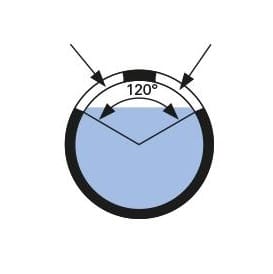
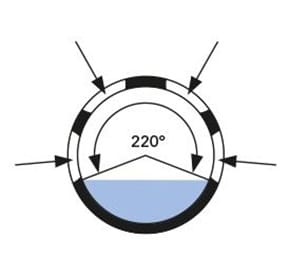

Multi-purpose pipe
Partial seepage pipe
Full seepage pipe
The purpose of drainage pipes in tunnels is to divert seepage water between the concrete shell and the rock and thus keep it away from the roadway or railroad tracks. Maintenance shafts are located at certain intervals, usually between 50 m and 100 m apart.
At first glance, Comprex technology does not appear to be suitable for drainage pipes or gravity pipes. However, flow-through pipe sealing cushions make it possible to create temporary cleaning sections between the manholes that are suitable for the Comprex process. These flow pipe sealing bags are available in various designs for graduated nominal diameter ranges from DN 100 to DN 1200.
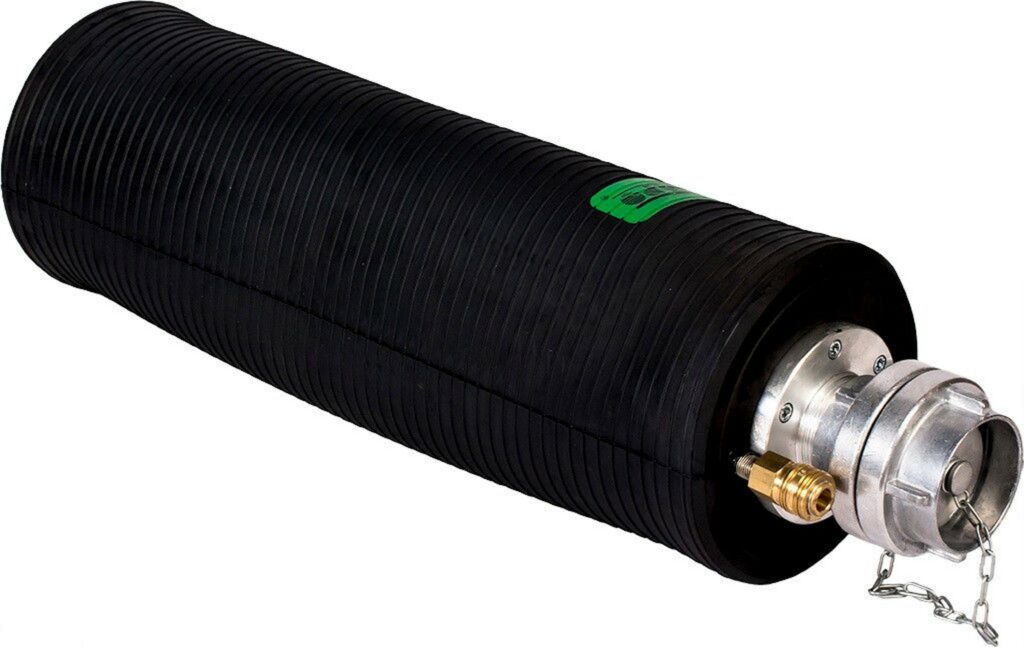

Flow pipe sealing pad with C-coupling
Installation with support
Previous experience
The use of flow-through pipe sealing cushions enables Comprex cleaning both with externally introduced fresh water and with accumulated seepage water. If fresh water is introduced externally, cleaning takes place in the direction of flow of the seepage water. This allows frequent pulse sequences for Comprex control. If no fresh water is available, accumulated seepage water can be used in partial seepage pipes, for example. However, it is necessary to wait until the seepage water volume sufficient for Comprex cleaning has accumulated. The compressed air pulses drive the seepage water several times against the direction of flow. By releasing the compressed air in the flow pipe sealing cushion, the particle-laden seepage water can drain off. Once the flow pipe sealing pad is closed again in the drainage pipe, the next cleaning cycle can begin.
Deposits in drainage pipes can vary greatly. In tunnels, seepage water comes into contact with the concrete shells and lime sinter forms with theCO2 from the tunnel atmosphere. Over time, this hardens and blocks seepage openings and even the drainage pipe. However, there are also drainage pipes with deposits that remain soft for a long time. As long as deposits have not yet hardened, they can be easily removed using the Comprex technique. This also applies to young lime sinter. For quickly hardened deposits, stationary Comprex technology with special automatically closing shut-off devices is recommended.
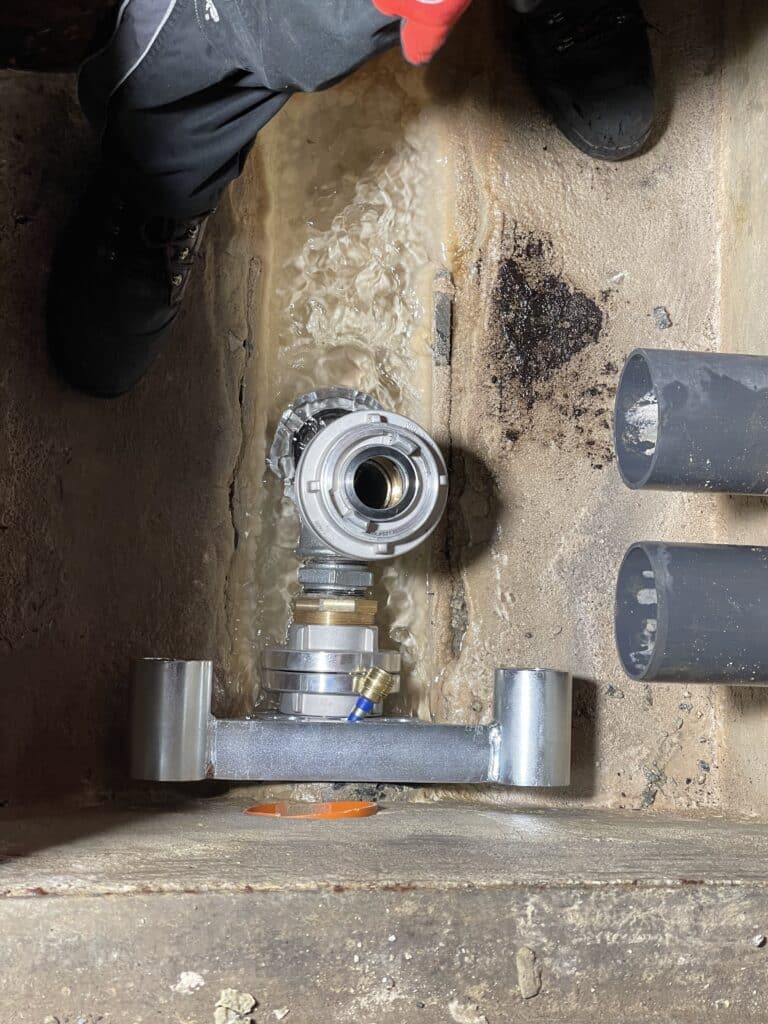
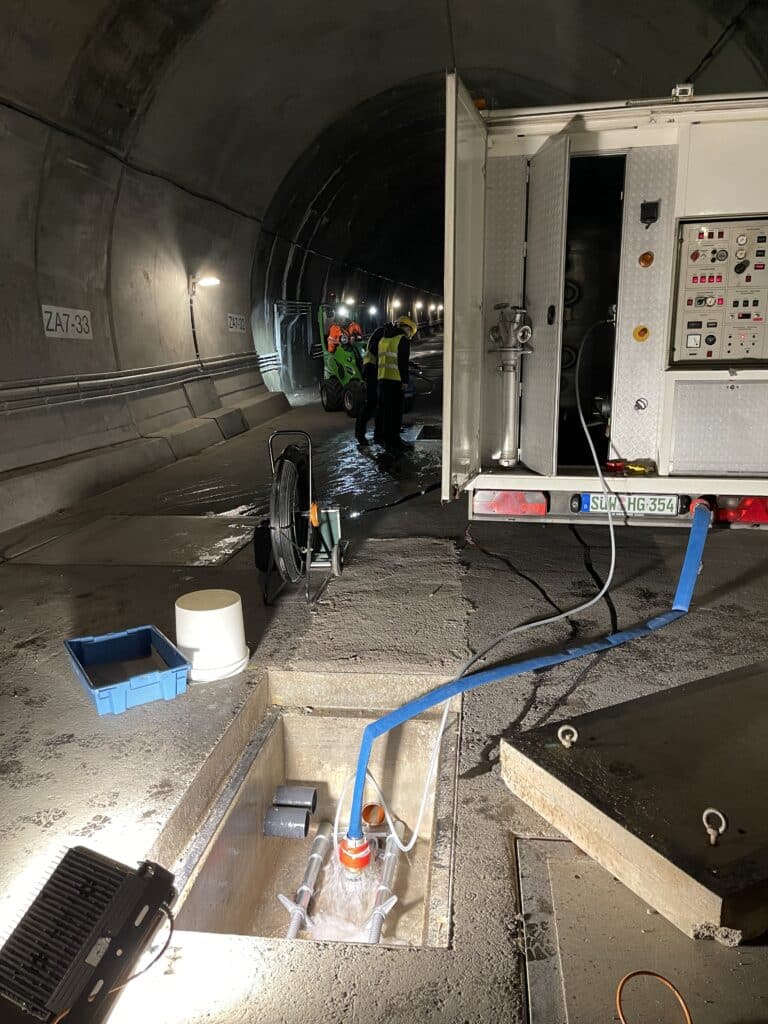
Flow pipe sealing pad inserted into the drainage pipe
Inserted flow-through pipe sealing pad with support and connected comprex® unit in a tunnel



